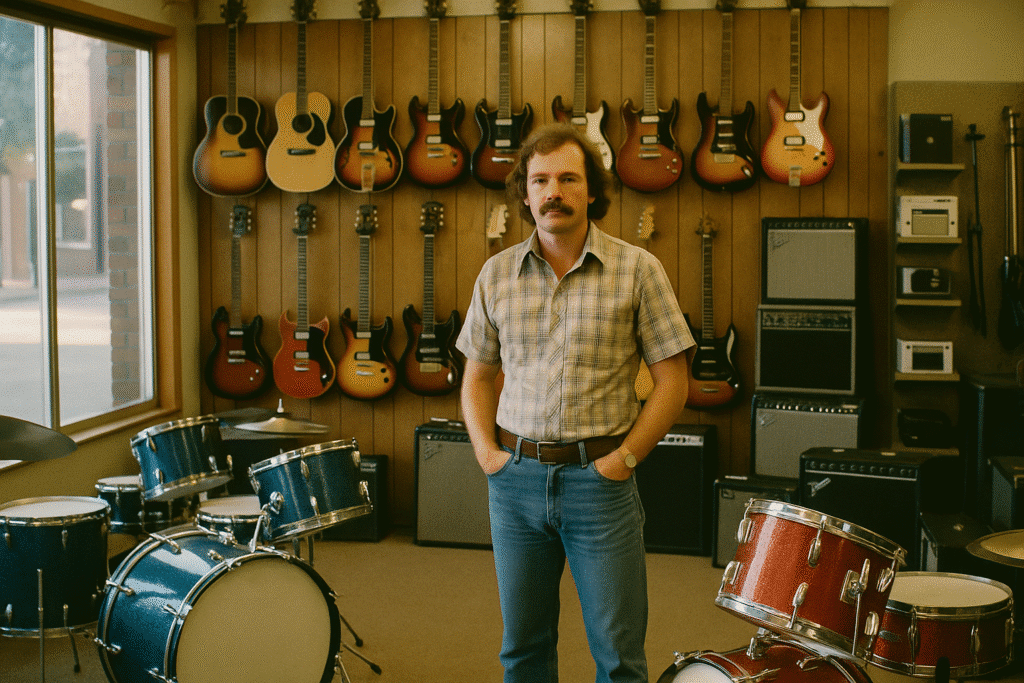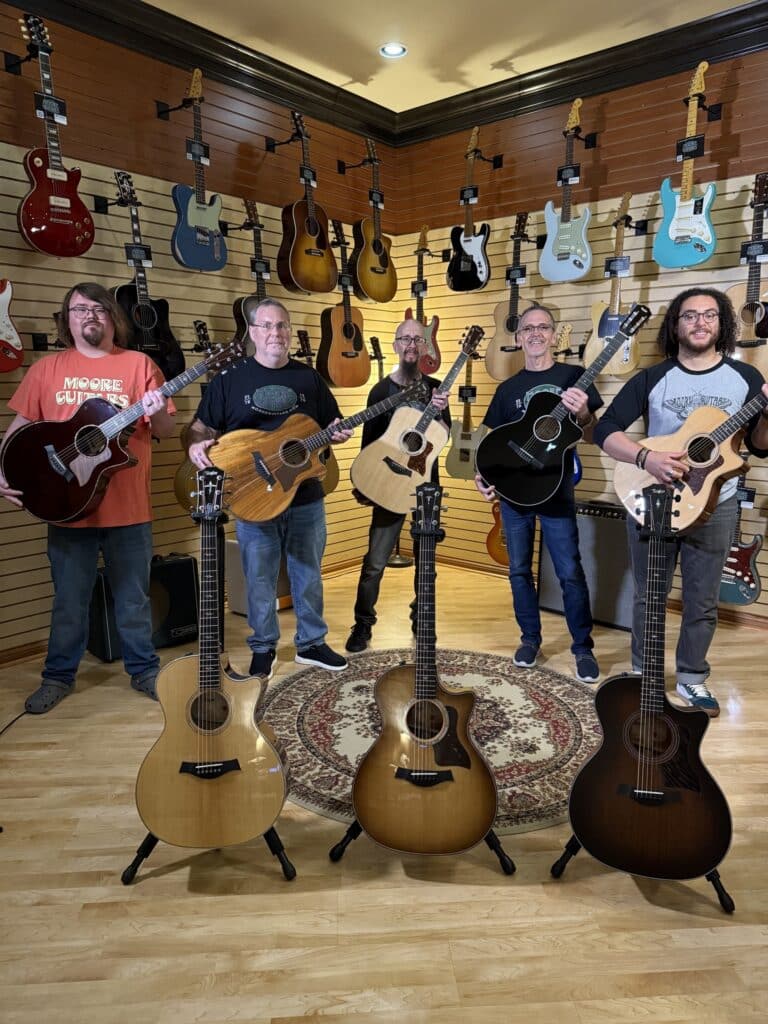0
$0.00
In an era of faceless e-commerce giants, Moore Guitars stands apart. We have the soul of a local guitar shop and the reach of a global powerhouse. We aren’t a tech company that ships boxes—we’re a team of musicians who built a world-class store. Whether you’re visiting us in Evansville, Indiana or browsing from the other side of the planet, you’ll get the same expertise and passion.
The story begins in downtown Newburgh, Indiana. Local drummer Pat Moore opened a humble 500-square-foot shop with a simple mission: give players the gear they need and the service they deserve.
There was no internet. There were no algorithms.

"There was just Pat, the gear, and the handshake."
That commitment to service worked. Over the next 36 years, Pat expanded “Moore Music” multiple times, moving to larger spaces to supply bands, churches, and players across Southwestern Indiana with the best drums, guitars, and PA gear in the region.


By 2012, Pat was ready to pass the torch. He sold the business to Brett Mulzer—a drummer, guitarist, recording engineer, and longtime customer of the shop.
Brett knew exactly what made the shop special, but he also saw a bigger future. He didn’t just want to serve the local community; he wanted to bring that “local shop” level of care to the rest of the world.

"You can buy high-end guitars online without sacrificing the personal touch—if you have the right team inspecting the gear before it ships."
Brett and the crew went to work, transforming a successful local business into a premier online destination.

Today, we’ve evolved into Moore Guitars. Our Evansville, Indiana showroom is still the heart of everything we do—but now players across the country and globe can get the same experience shipped to their door.
Online or in person, you get the same expertise, the same white-glove care, and a crew that still believes in the handshake.

We know you have a million places to buy gear online. We don’t take it for granted that you chose us.
When you reach out, you get a musician in Indiana — not a bot, not a script, not a call center overseas. Phone calls, emails, chats, questions about your order at 9pm — we actually want to hear from you.
We’re authorized dealers for the world’s best brands, and we stand behind every shipment. If something’s not right, we’ll make it right. Simple as that.
We’re not here for one transaction. We want you to feel compelled to tell your friends about us — whether you bought a pack of picks or a Custom Shop Strat.
I was a customer here long before I owned the place. I know what it feels like to save up for the right guitar. To obsess over specs. To wonder if the shop on the other end of that transaction actually gives a damn.
We do. That’s the whole point.
We’re not the biggest shop out there. We’re not trying to be. What we are is a place where players actually answer the phone, where every guitar gets inspected like it’s going home with us, and where your first purchase gets the same attention as your tenth.
Whether you’ve been with us for years or just found us today — thank you for trusting us with your tone.
See you soon, whether that’s online or in person.
– Brett